If you're searching for the key differences between ground mustard and mustard seeds, you've come to the right place. These two forms of mustard serve distinct roles in cooking, and understanding their unique properties can transform your recipes from ordinary to extraordinary. Whether you're a home cook or professional chef, knowing when to use each will prevent bland dishes and elevate your culinary creations.
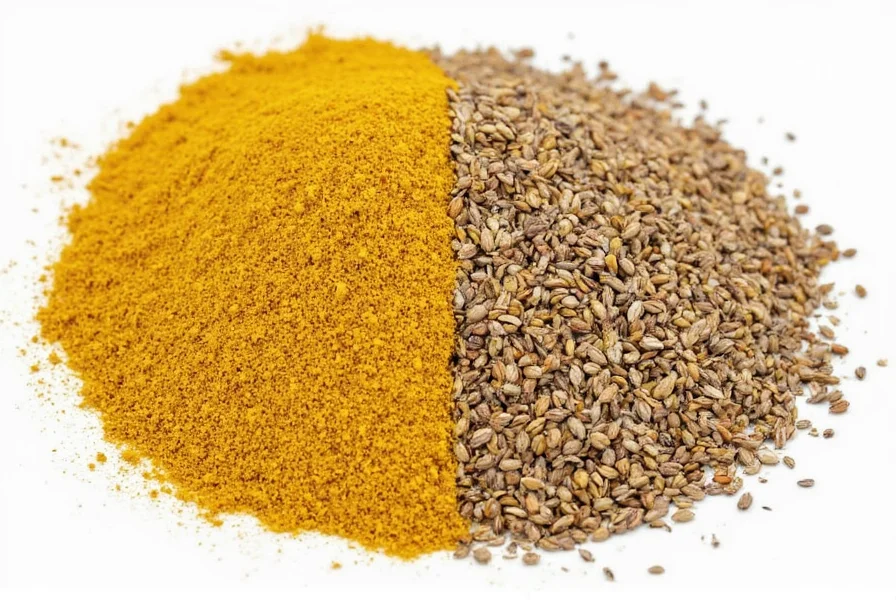
| Characteristic | Mustard Seeds | Ground Mustard |
|---|---|---|
| Flavor Release | Requires activation via crushing or heating | Immediate flavor; no prep needed |
| Potency | Milder when unactivated; becomes sharper when cooked | More intense and consistent flavor |
| Texture | Crunchy bite; adds texture to dishes | Smooth finish; blends easily into sauces |
| Versatility | Ideal for pickling, tempering, and rustic dishes | Perfect for dressings, marinades, and baking |
These differences aren't just academic—they directly impact how you'll use each form in your kitchen. Mustard seeds provide texture and slow-release flavor for specific techniques, while ground mustard delivers instant, uniform heat for quick applications. Let's explore how to make the most of both.
Table of Contents
- What Are Mustard Seeds?
- What Is Ground Mustard?
- When to Use Each: Practical Tips
- Cooking Chemistry: How They React
- Storing Mustard Seeds and Ground Mustard
- Buying Guide: Choosing Quality Products
- Recipes That Shine with Mustard
- Frequently Asked Questions
- Conclusion: Spice Up Your Kitchen Wisdom
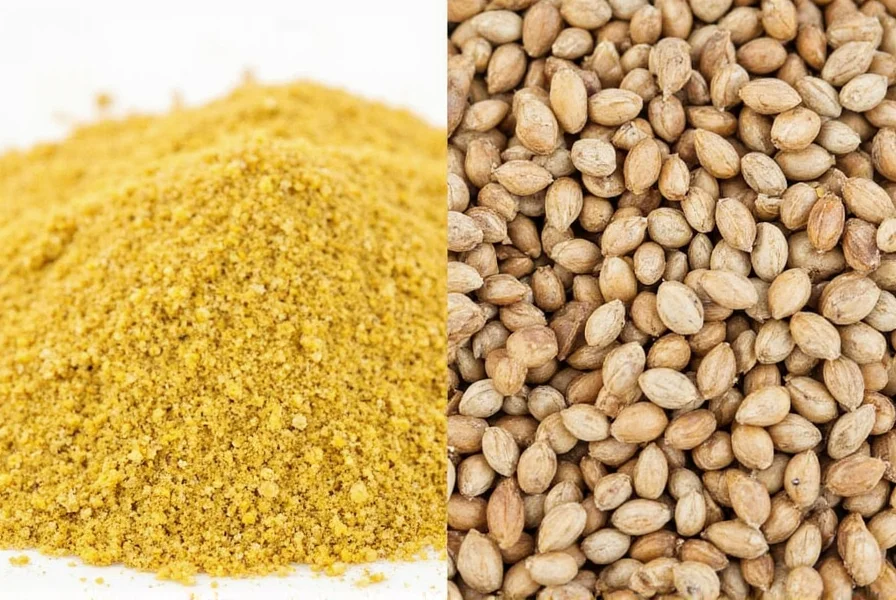
What Are Mustard Seeds?
Mustard seeds are tiny, round seeds harvested from various mustard plants. There are three main types used globally:
- Yellow mustard seeds – mild and commonly found in American-style mustards.
- Brown mustard seeds – more pungent and often used in European and Indian cuisine.
- Black mustard seeds – the strongest in flavor and popular in traditional South Asian dishes.
These seeds remain dormant until activated by heat or moisture. When raw, they have little aroma. But once cracked or toasted, they release powerful enzymes that give mustard its signature kick.
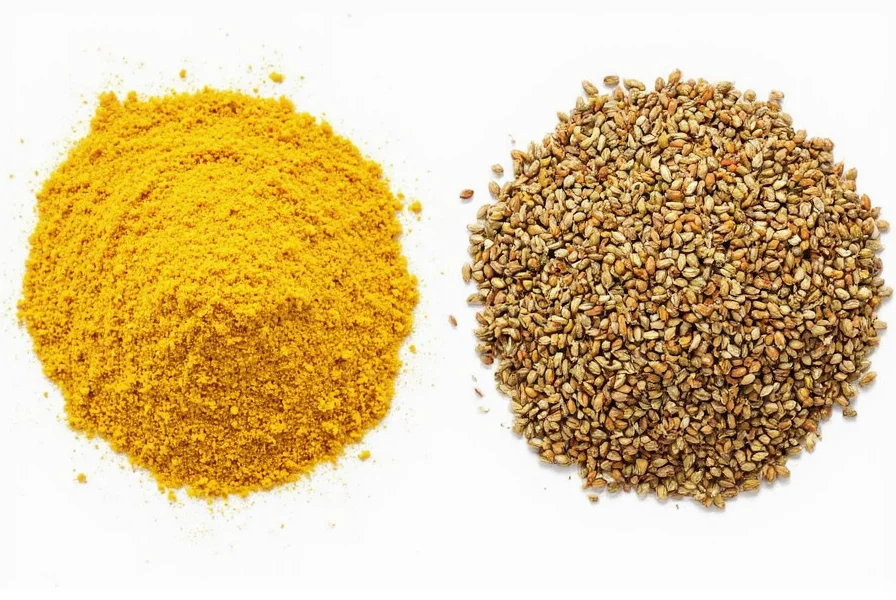
What Is Ground Mustard?
Ground mustard is simply mustard seeds that have been milled into a fine powder. It's often labeled as 'dry mustard' or 'mustard flour.' Unlike whole seeds, it's ready to use straight out of the jar, offering instant potency without any preparation.
The flavor intensity depends on the type of mustard seeds used and how finely they're ground. Some brands blend in additional spices like turmeric (for color) or salt (for preservation), so always check the label if you're aiming for pure flavor control.
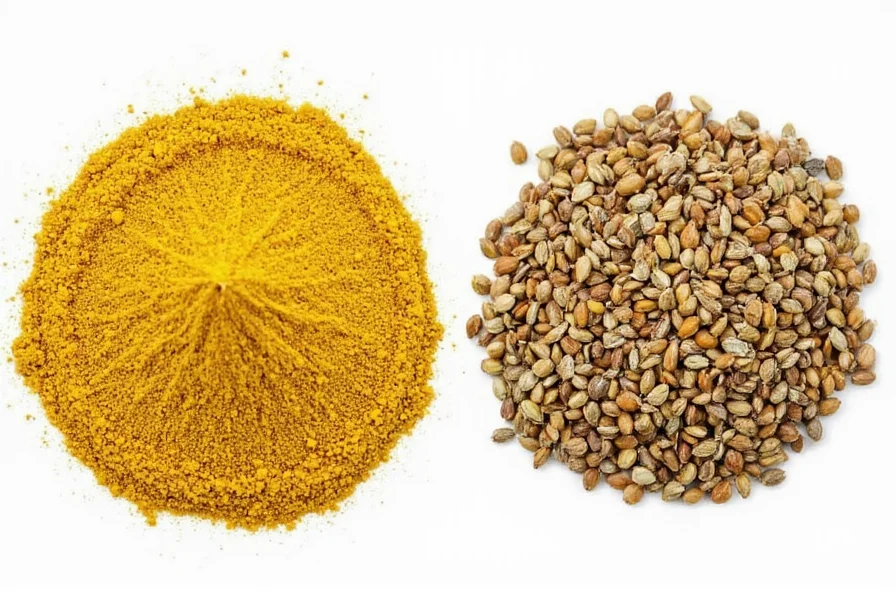
When to Use Each: Practical Tips
- Use Mustard Seeds When:
- You want a crunchy texture in dishes like pickles, curries, or vinaigrettes.
- You're making homemade mustard—starting with seeds gives more depth.
- You're tempering (tadka) in Indian dishes like sambar or chutney.
- Use Ground Mustard When:
- You need quick flavor infusion in sauces, dips, or barbecue rubs.
- You're adding mustard punch to doughs, batters, or spice blends.
- You don't have time to grind your own seeds and want convenience.
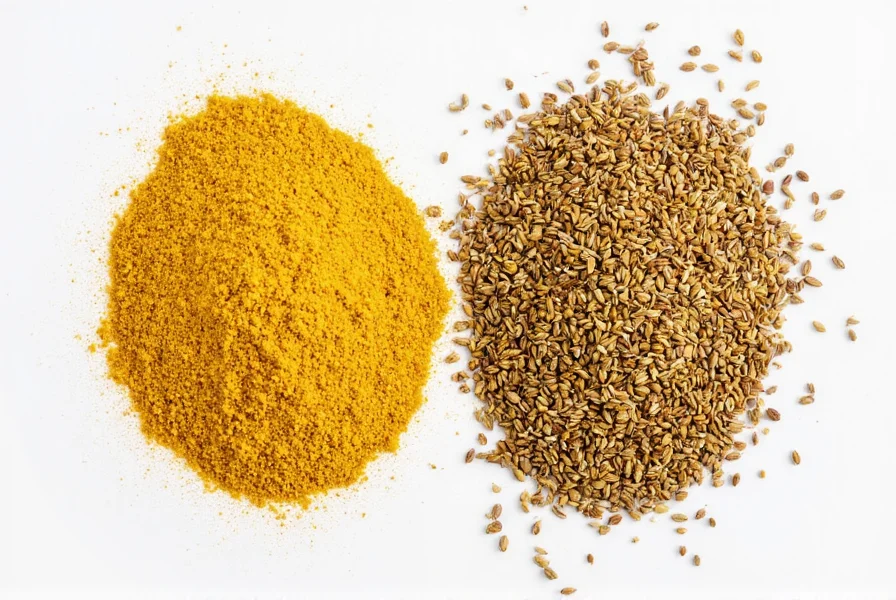
Cooking Chemistry: How They React
Both mustard seeds and ground mustard contain myrosinase, an enzyme that activates when exposed to liquid. Here's what happens under the hood:
- Whole Seeds: The enzyme remains locked inside until crushed or chewed. When moistened and heated, they release volatile compounds that create a sharp, sinus-clearing sensation.
- Ground Mustard: Already broken down, it reacts instantly with water or vinegar, producing a strong flavor within minutes. Mixing with cold liquid yields a smoother taste; hot liquid enhances sharpness.
Storing Mustard Seeds and Ground Mustard
To preserve flavor and shelf life:
- Store both in airtight containers away from light and moisture.
- Whole mustard seeds last up to 3–4 years if stored properly.
- Ground mustard retains potency for about 1–2 years; after that, it starts to lose flavor.
- For long-term storage, keep them in the fridge or freezer, especially in humid climates.
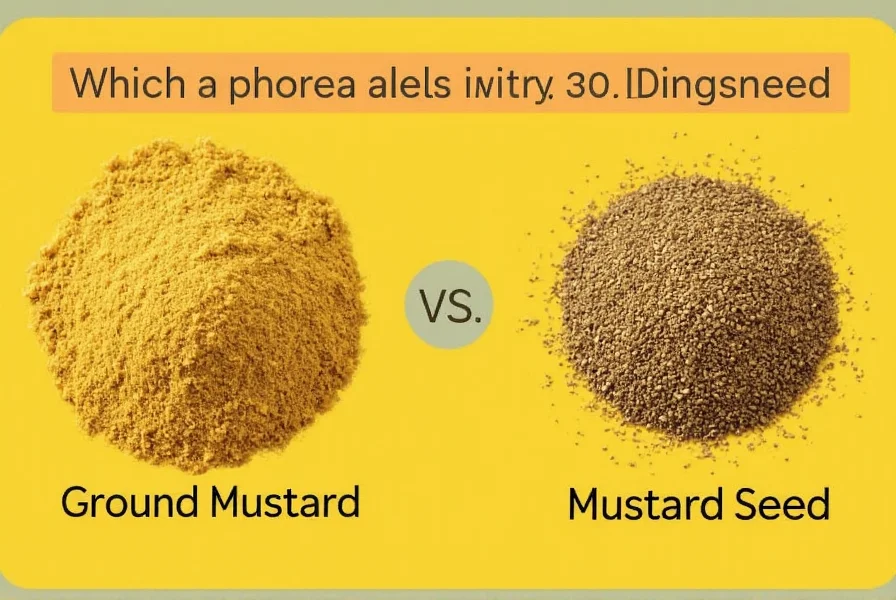
Buying Guide: Choosing Quality Products
| Product Type | Features | Best For |
|---|---|---|
| Whole Mustard Seeds | Freshness matters—look for tightly sealed packaging and no signs of rancidity. Avoid discolored or dusty-looking seeds. | Homemade mustards, Indian dishes, pickling, and rustic recipes. |
| Ground Mustard (Dry Mustard) | Opt for pure ground mustard with no fillers or preservatives. Smell before buying—if it lacks aroma, it's old. | Dressings, marinades, sandwich spreads, and spice blends. |
| Pre-Mixed Mustard Pastes | Variety includes Dijon, yellow, honey mustard, etc. Choose based on flavor intensity and intended use. | Quick condiment use, sandwiches, and sauces. |
Recipes That Shine with Mustard
- Honey Mustard Glazed Chicken: Mix ground mustard with honey, garlic, and olive oil for a sweet-and-spicy glaze perfect for roasting or grilling.
- Indian Pickle Base: Heat mustard seeds in oil, add spices, vinegar, and chopped veggies for a tangy homemade pickle.
- Spiced Lentil Soup: Temper mustard seeds in hot oil at the start of cooking to infuse depth into lentils and vegetables.
- BBQ Dry Rub: Combine ground mustard with smoked paprika, brown sugar, and chili powder for a bold rub on ribs or brisket.
- Classic Deviled Eggs: Add a teaspoon of ground mustard to the yolk mixture for extra zing and creaminess.
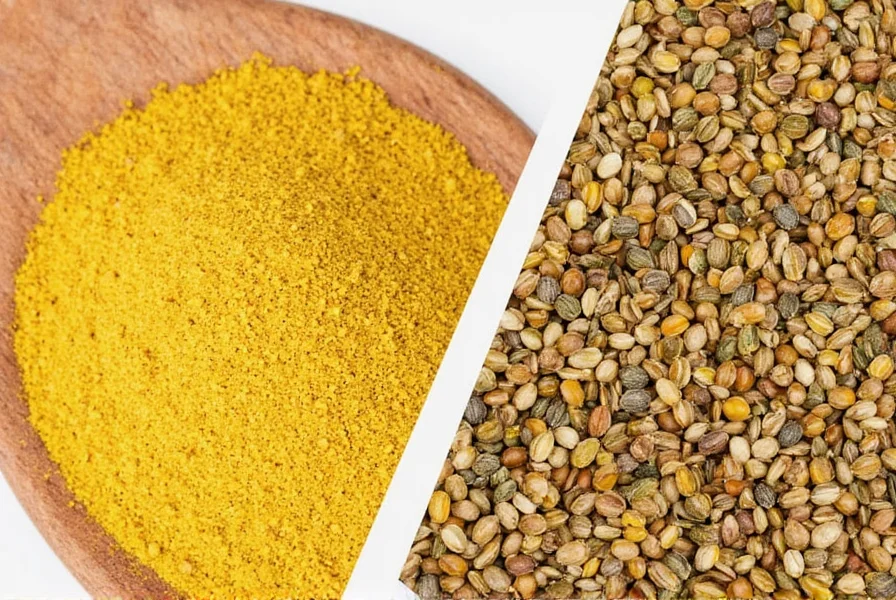
Frequently Asked Questions
Can I substitute ground mustard for mustard seeds in recipes?
Yes, but with adjustments. As a general rule, 1 teaspoon of mustard seeds equals about 1/2 teaspoon of ground mustard. Keep in mind that seeds provide texture while ground mustard offers immediate flavor. For best results, toast and grind seeds yourself when substituting for ground mustard.
Why does my mustard taste different when using seeds versus ground mustard?
The difference comes from enzyme activation. Whole seeds release their flavor compounds more slowly when crushed or chewed, creating a more complex flavor profile that develops over time. Ground mustard reacts immediately with liquids, producing a sharper, more consistent heat right away. This is why homemade mustards using seeds often have deeper flavor complexity.
How long does it take for mustard seeds to activate their flavor?
Mustard seeds need time to activate their enzymes. When soaked in liquid, it typically takes 10-15 minutes for yellow seeds and 5-10 minutes for brown/black seeds to develop their full flavor. For cooking applications like tempering, the flavor develops almost instantly when seeds pop in hot oil.
Is there a nutritional difference between mustard seeds and ground mustard?
Nutritionally, they're nearly identical since ground mustard is simply milled seeds. However, whole seeds may retain nutrients slightly longer due to less surface area exposed to air. Both forms are low in calories but contain selenium, magnesium, and beneficial phytochemicals. The main difference is in how quickly nutrients might degrade - ground mustard loses potency faster.
What's the difference between dry mustard and ground mustard?
These terms are used interchangeably. 'Dry mustard' and 'ground mustard' refer to the same product - mustard seeds that have been milled into powder. Some specialty products might have slight variations, but for practical cooking purposes, they're the same ingredient. Check labels to ensure you're getting pure mustard without added fillers.
Why do some recipes specify one form over the other?
Recipes specify based on desired texture, flavor development timing, and traditional preparation methods. Pickling recipes often use whole seeds for visual appeal and gradual flavor release. Dressings and marinades typically call for ground mustard for immediate flavor integration. Authentic Indian recipes usually specify seeds for tempering techniques, while Western recipes often use ground mustard for convenience.
Conclusion: Spice Up Your Kitchen Wisdom
In the showdown between ground mustard and mustard seeds, there's no clear winner—it all depends on how you plan to use them. If you're craving texture and authenticity, mustard seeds are your go-to. If you need fast, uniform flavor, ground mustard wins hands-down.
So, why choose one when you can have both? Keep a jar of each in your pantry and let your creativity decide which one gets the spotlight. After all, the best kitchen is one filled with choices, flavor, and a dash of mustard magic!

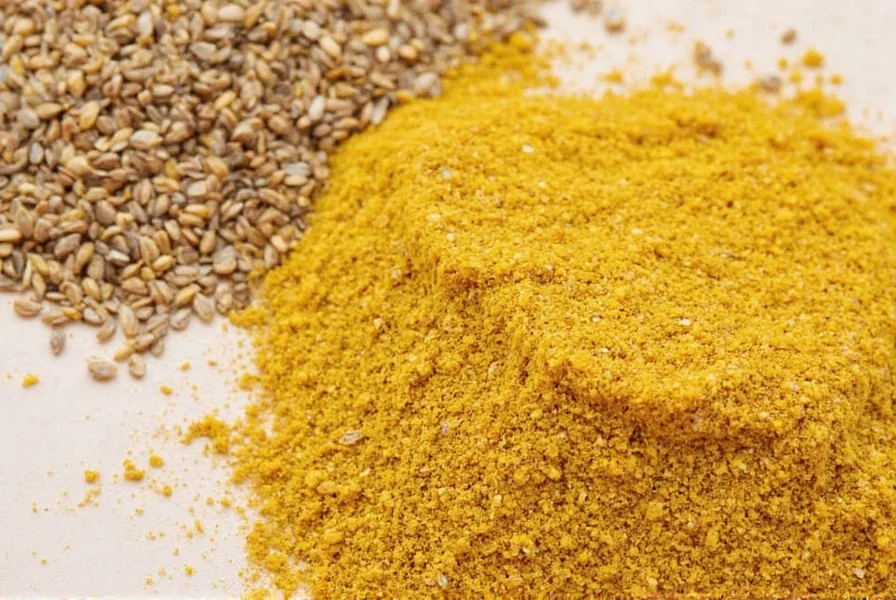









 浙公网安备
33010002000092号
浙公网安备
33010002000092号 浙B2-20120091-4
浙B2-20120091-4